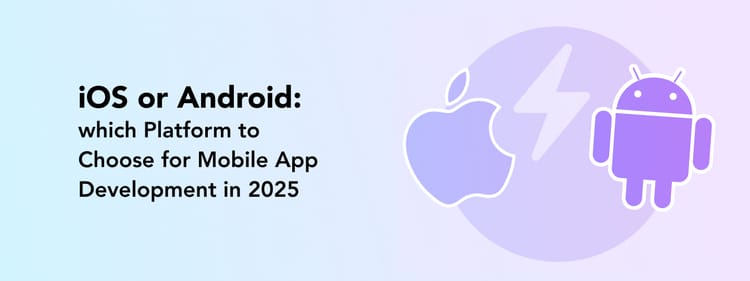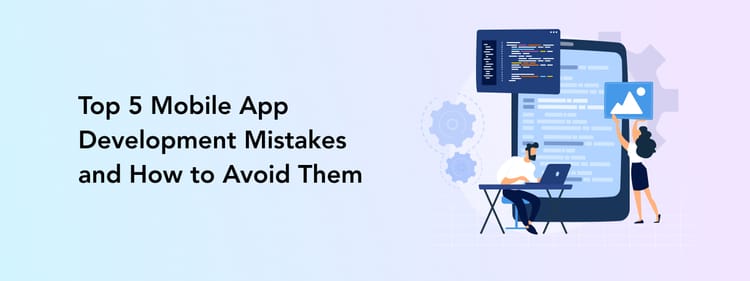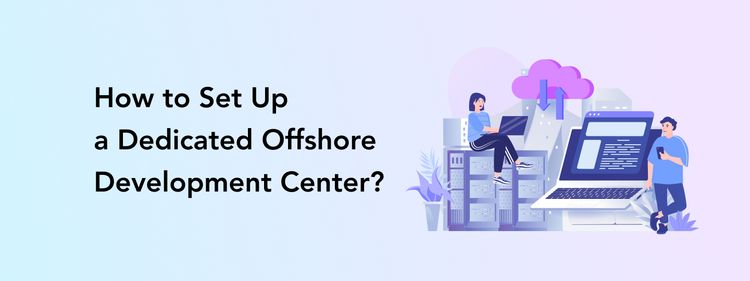UI/UX design is one of the first and most important steps of the mobile app development process. It is a stage when all the crucial functional and visual decisions are made and the final look of the app is created. But how do you know that a UI/UX designer is worth working with and will guarantee the best results for your app? Let’s discuss how to choose a UI/UX designer for your project.
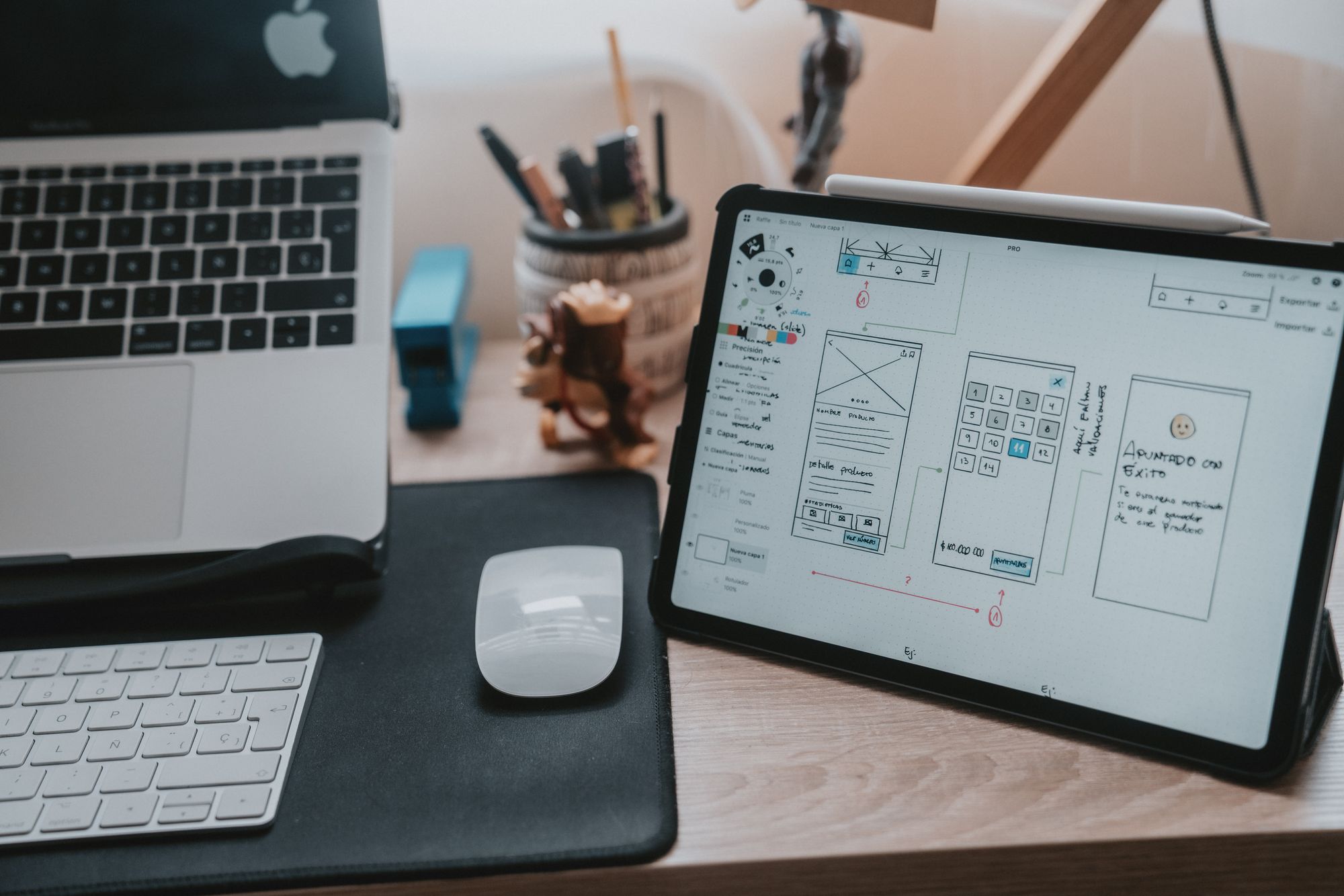
Roles and Responsibilities of UI/UX Designers
To make it clear what makes up a true specialist in UI/UX design, we first should look into the scope of responsibilities a designer undertakes and skills needed to achieve these tasks successfully. You might choose to hire the right UX designer and UI designer for your team separately. Still, one UI/UX designer can undertake a full cycle of the design process in most projects.
Among the responsibilities of a UI/UX designer in an app development team are
- Conducting research, including market research, creating user persona, organizing interviews
- Coming up with a user flow and journey map
- Making low-fidelity (wireframes) and high-fidelity prototypes
- Coming up with branding and design standards for an app
- Creating UI elements
- Coming up with typography and color palette decisions
- If necessary, creating illustrations and animations
- Regularly communicating with a client, incorporating their feedback into the design
- Organizing workshops with clients
- Conducting basic usability and A/B testing
Some of the main skills any UI/UX designer needs to possess are
- Ability to undertake each step of the full-cycle app design, such as creating a journey map, prototyping (including making clickable prototypes), creating all the UI elements, basic testing, etc
- High level of proficiency with prototyping tools and graphic editors, such as Figma, Adobe Illustrator, Sketch, InVision Studio, and Framer X
- Knowledge of UX research methods
- Ability to develop design systems and form the app’s style
- Skills in making icons and simple illustrations
- Ability to work in iterations and incorporate feedback into a product
- Understanding of current trends and best practices of UI/UX design, knowledge of main methodologies
- Good knowledge of composition and typography
- Basic skills in analytics and user testing tools
This checklist will help you identify the skills and requirements to ask about a UI/UX designer in the hiring process and gives you a hint on how to choose a UX designer or hire a user interface designer that will bring you success.
Of course, apart from the hard skills we listed, soft skills are also a must. A designer should be able to communicate with you, as a product owner, developers, project managers, and other team members. That’s why a designer's English level should be sufficient for a proper discussion. What’s more, a UI/UX designer needs to have a good understanding of user behavior, psychology, and information perception to make user-friendly designs.
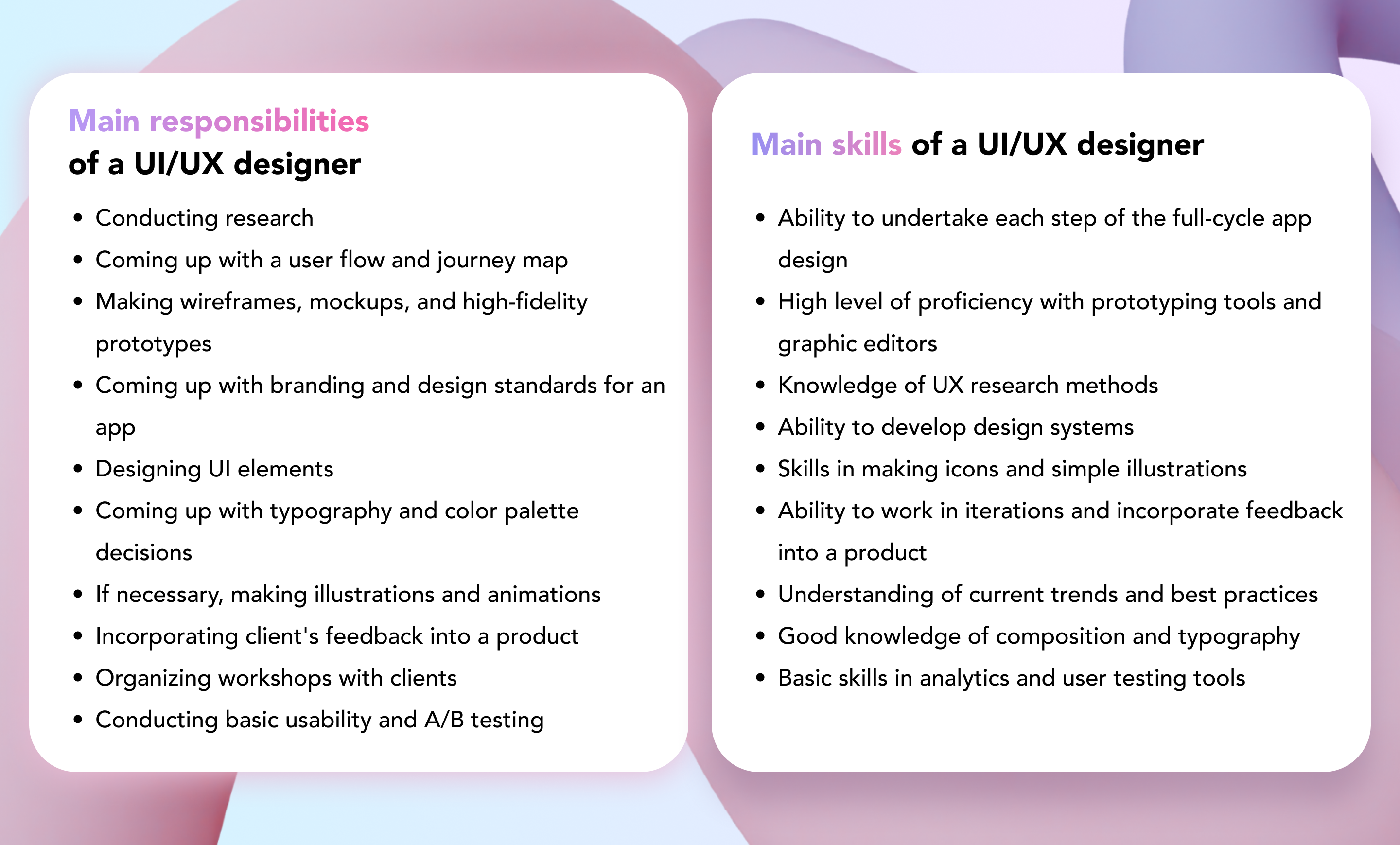
Main Steps to Choose the Right UI/UX Designer
Now that it is clear what a professional UI/UX designer should look like, let’s move on to a more pragmatic side of the matter: how to choose a UI/UX designer. We will share a few tips on how to hire a user experience designer/user interface designer. By following these steps, you will be able to choose a user experience designer or user interface designer without any bumps.
Use dedicated professional platforms
First things first, where do you find a UI/UX designer that fits your requirements? On dedicated design platforms, of course! You might conduct your search on such websites as
- Dribbble
- Behance
- GoodFirms
- Clutch
Additionally, you can simply look up agencies in your preferred region through a Google search and check their websites. While some of the listed platforms work as portfolio-showcase tools, others are review-based. That’s why it is crucial for you to check all the profiles of your preferred specialist or agency on different platforms to get a full picture of their experience, style, and work attitude.
When considering how to choose a user experience designer to hire or a user interface designer, be sure to read all the reviews from previous clients. Pay attention to the longer ones that give insights into the work process and the final outcomes. Just a review saying “Great” won’t be of good use to you; what's more, it can even be fake.
You should also look through the previously completed cases of a designer or agency. Do you like the style? Do all the UX and UI decisions seem logical to you? Are there any cases in your industry?

Dedicate time for a meeting
Let’s say your preliminary research was successful and you found a couple of UI/UX designers you liked. Not to have any disappointments later, it’s best to meet the specialist in person and discuss all the details you need to know.
You can ask the designer to tell more about the projects they completed, explain their UX and UI decisions, and share how their design helps solve users’ requests. Of course, the designer will also have some questions for you about your product and expectations towards the design. Such a meeting will help the UI/UX designer understand the scope of work ahead, your preferences in terms of UX and style, and needed research. Additionally, it is a chance for both parties to understand if their communication styles match and whether the future collaboration seems promising.
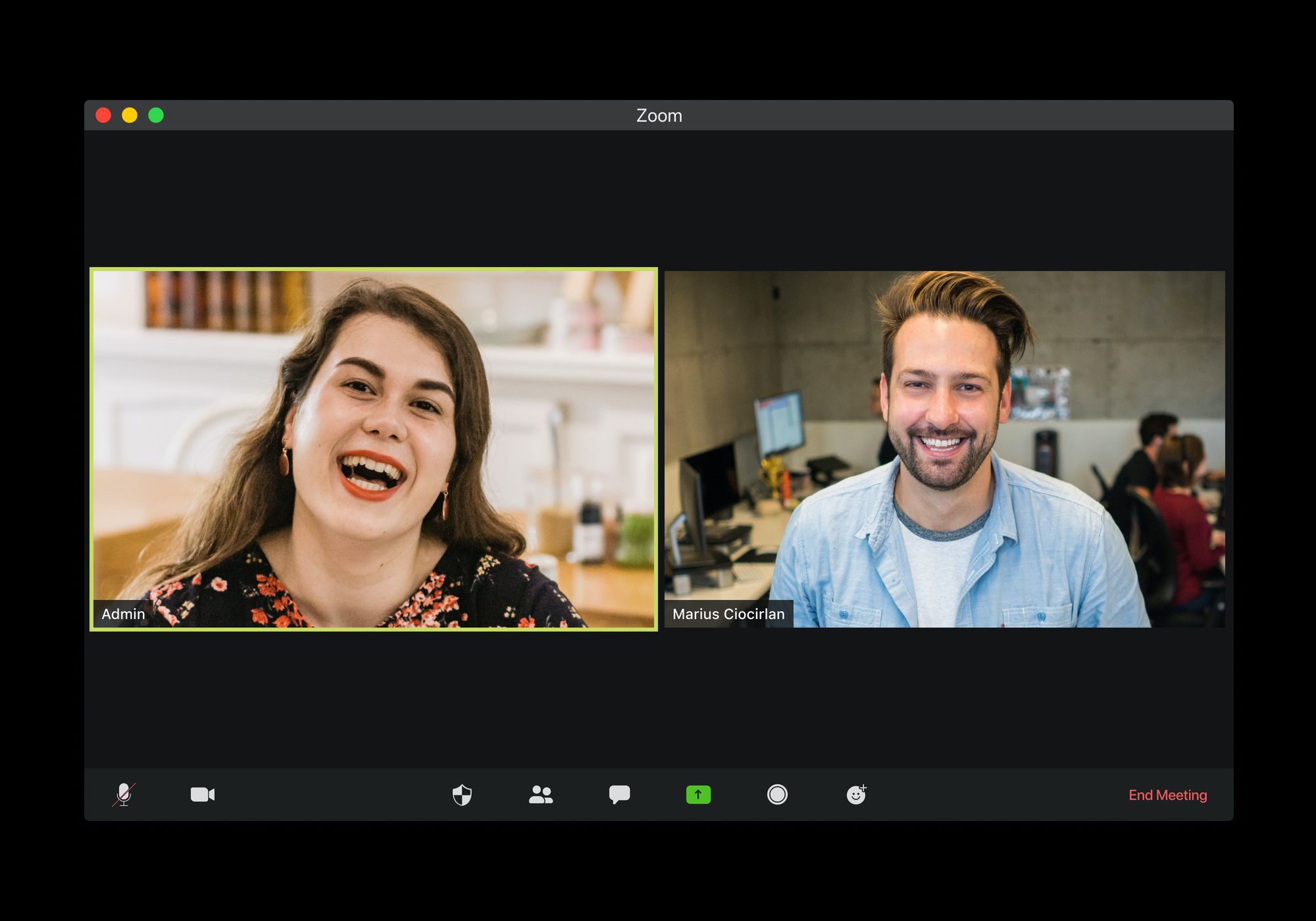
Discuss the contract and payment model in advance
Before signing any papers, you need to know all the details on
- Team composition (only one UI/UX designer, two separate UX and UI designers, any additional team members, such as business analyst, project manager, etc)
- Payment model and designer’s rate
- Project’s deliverables and deadlines (wireframes, clickable prototypes, etc)
- Communication channels (Slack, email, workshops, etc.)
- Reporting frequency and tools (Slack, Jira, access to design tools, etc)
So, actually, how to hire the right user experience designer or user interface designer? After agreeing on all the parameters and making sure everything is the way that suits you, you can go on and sign a contract with a specialist. Remember to read it carefully and, of course, never work without a contract!
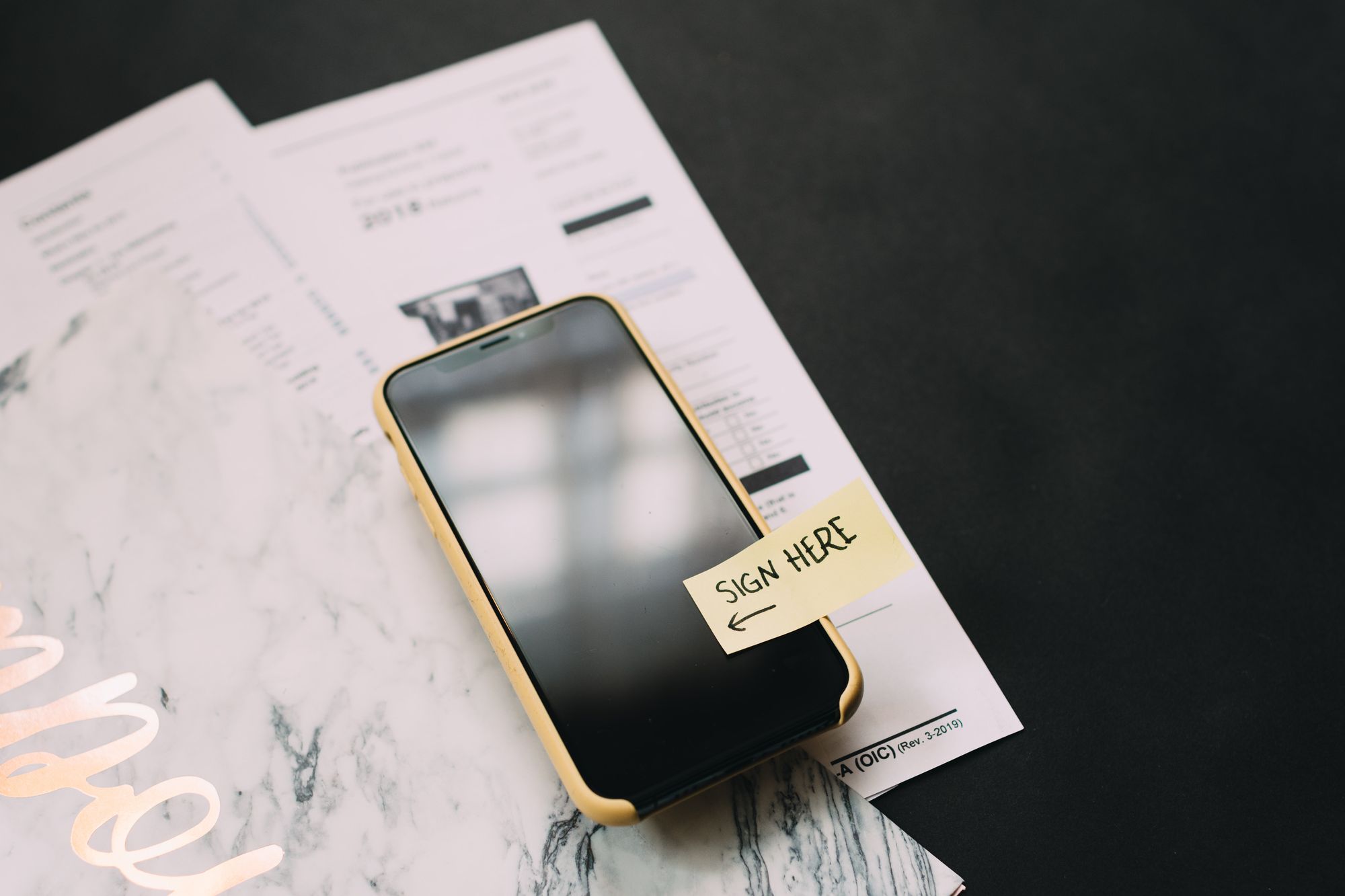
5 Red Flags When Choosing a UI/UX Designer
Remember we recommended you organize an intro meeting with a designer to get to know them and decide whether this specialist is good for your project? There are some red flags to look out for during the interview that signal a not-so-professional UI/UX designer. Let’s discuss how to choose a user interface designer or user experience designer that won’t disappoint.
Doesn’t have a portfolio
Some agencies might assign you a UI/UX designer without showing their projects first. You might even stumble upon freelance specialists describing their skills in a CV but having nothing to prove those. Hiring someone without a portfolio is like getting a pig in a poke. It is especially true for UI/UX design where most decisions are visualized in a completed work and can showcase the strengths and weaknesses of a specialist.
Doesn’t care about research
You might have heard that research is half of the UI/UX designer's job. It’s true. To come up with a feature set that solves a particular problem of a potential user and create a convenient UX design, proper research is simply a must. Otherwise, the final product’s design will be based on vague assumptions about the market and user.
Cannot explain all the design decisions
A good UI/UX design isn’t just about being visually attractive. The main point of any digital product is to help users solve a certain request in the simplest way possible. Stylish looks and fun elements are the runner-ups in this case. That’s why every single element in the app’s UI is there for a reason. And a professional designer should be able to justify their decisions and explain why the app’s navigation works this way and how such a layout makes users’ lives easier.
Isn’t up-to-date with the latest design trends
Surely enough, any app owner wants their product to be not only highly practical but also eye-catching and inviting. That’s why your perfect UI/UX designer should know what’s trending in the design world right now and how to attract users’ attention. What’s more, many design trends become best practices with time; yes, certain UX and UI trends are so popular for a reason. You probably wouldn't want to see your app with an old-fashioned, unattractive interface. A designer of your choice should be able to pinpoint the current trends that will work for your product and won’t get outdated anytime soon.
Isn’t empathic
The last red flag we are to discuss might not seem too obvious but let us explain. Being a good UI/UX designer takes understanding human psychology. Think about this: designers creating mobile apps need to know what motivates people to open an app, what are their pains and frustrations, what users pay attention to first, how they perceive information, and so on. All in all, being able to predict the user’s response to a product and putting oneself in the user’s shoes is the only way to make a product that meets users’ needs and brings them satisfaction.

How Much Does It Cost to Hire a UI/UX Designer
Now that we went through all the important aspects of how to hire a UI/UX designer for your project, let’s peek into the budget you will need to dedicate to getting UI/UX design services.
A common payment model for UI/UX design is an hourly-based rate, meaning that a client pays for each hour a designer spends working on the project, from preliminary research to UI final touches. The hourly rate of a UI/UX designer or agency depends on a number of factors, such as
- Specialist’s location (US-based designers would charge more per hour as compared to professionals from Eastern Europe, for example, Ukraine)
- Designer’s seniority level and experience ( A senior-level UI/UX designer with famous names in their portfolio will charge more than a junior designer with a couple of completed projects)
- Collaboration model (Freelancers might charge a different rate than an outsourcing company)
Usually, an hourly rate for mobile app UI/UX design varies between $35-$50 for a specialist from Ukraine. Multiply the hourly rate of your preferred specialist by the number of hours needed to complete a UI/UX design project, which is a minimum of 100-150 hours, and you can understand the approximate final price.
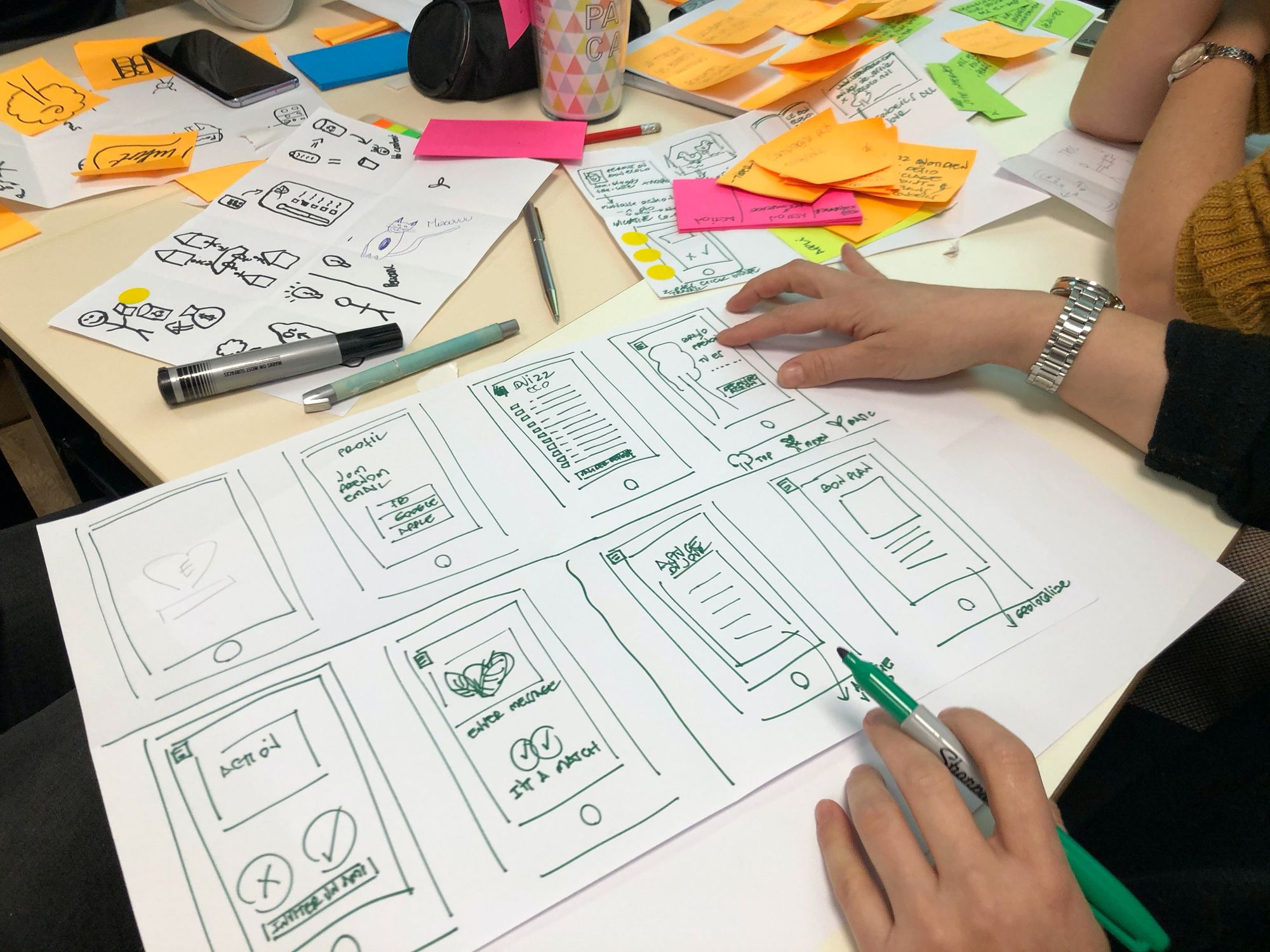
Choose Perpetio as Your Reliable Partner
Perpetio offers a full cycle of mobile app design and development as well as separate UI/UX design services. When it comes to creating apps and websites, our design team doesn’t start wireframing or choosing fonts as a first step. We want the final product to be something more than just a visually appealing shell; that’s why the first step is always to research and determine the product’s competitive advantages.
Our design process by default includes a research stage, when a designer analyzes the current market, determines what are the pains of potential users, and chooses the feature set and journey map that will bring the most use and satisfaction to the users. That’s why we can vouch for the final product to be not only good-looking but also effective and highly practical. For example, take a look at our recent works: a UI/UX for a delivery service and UI/UX for a grocery startup. To come up with clear, simple enough navigation and a feature set that includes a whole range of users' requests, our design team dedicated hours to careful market research, potential user interviews, and creating user personas.
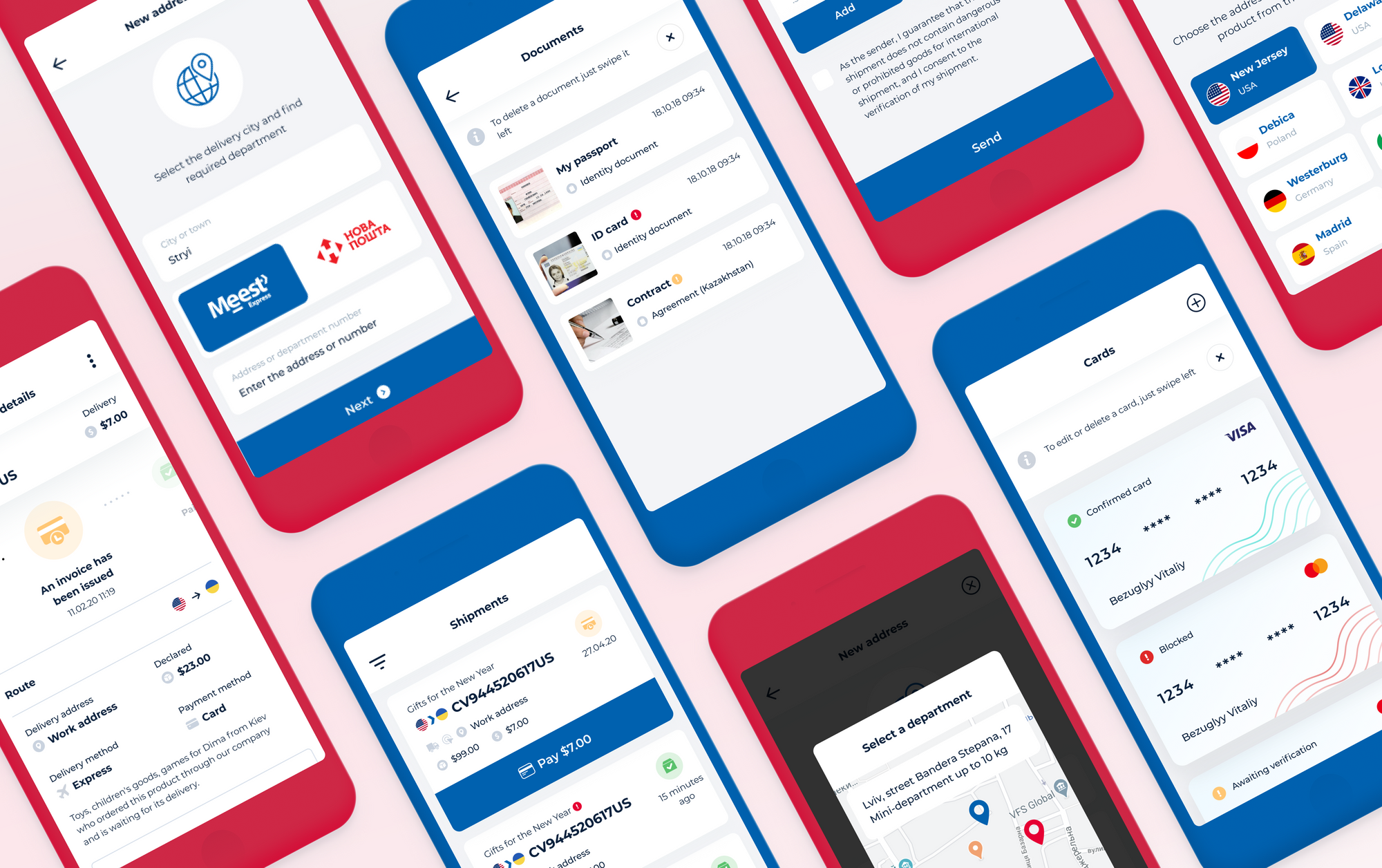
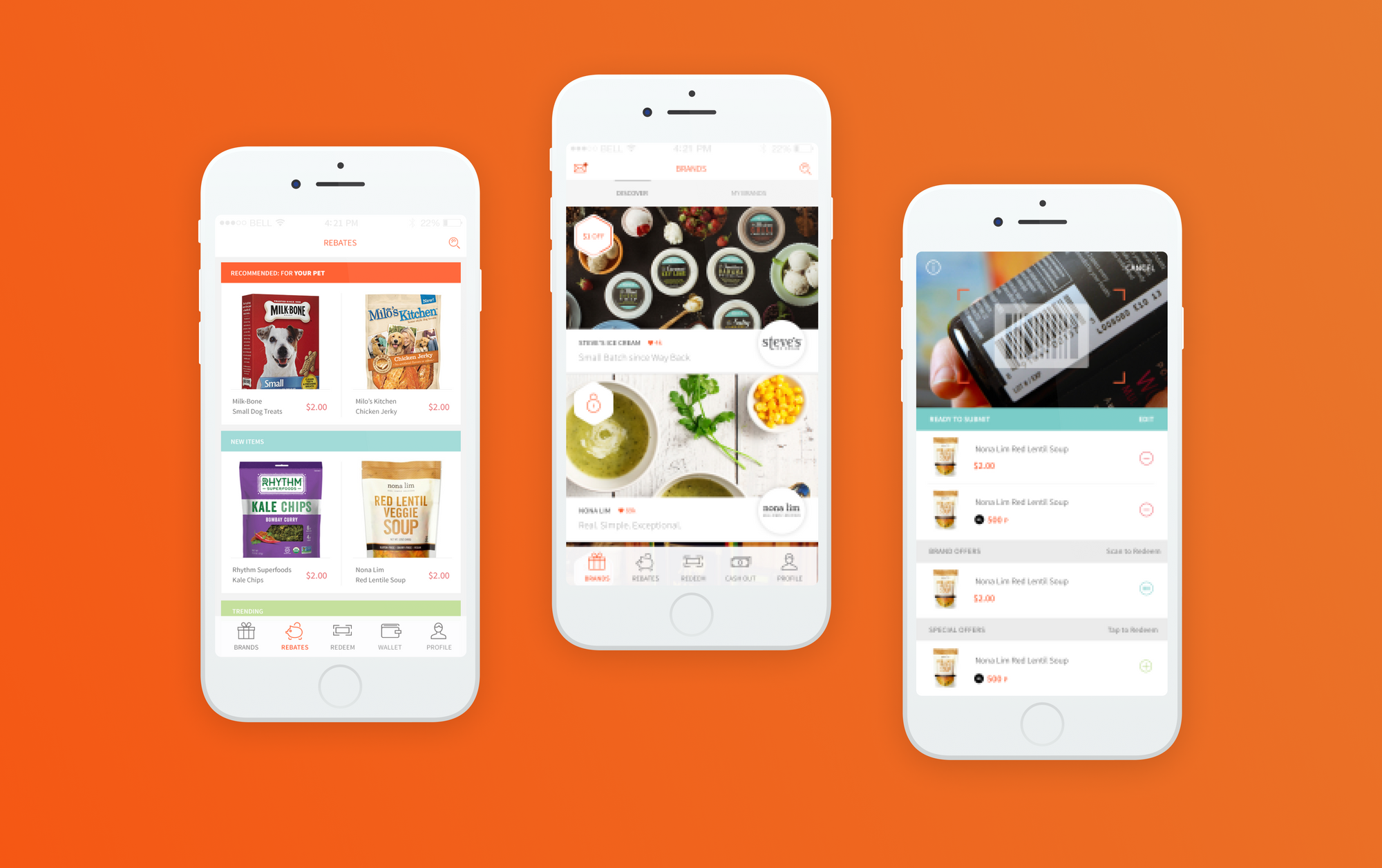
Conclusion
A UI/UX designer is a crucial member of any mobile app or web development team. It is a specialist who decides on the look and feel of the product as well as creates a user experience from scratch. That’s why knowing how to choose the right UX designer and UI designer is a determining point that makes your future product a win or a loss. Be sure to check the UI/UX designer's portfolio, conduct an interview with them, and look out for any red flags in their communication. Such small steps can save you from getting a product that has nothing in common with your expectations.
FAQ
How to choose the right UI/UX designer?
Be sure to check the UI/UX designer's portfolio, conduct an interview with them, and look out for any red flags in their communication.
How much does it cost to hire UI/UX designer?
Usually, an hourly rate for mobile app UI/UX design varies between $35-$50 for a specialist from Ukraine. Multiply the hourly rate of your preferred specialist by the number of hours needed to complete a UI/UX design project, which is a minimum of 100-150 hours, and you can understand the approximate final price.
What are the red flags when choosing UI/UX designer?
Some of the red flags of a UI/UX designer include not having a portfolio, not conducing preliminary research, not being able to explain their design decisions, not being aware of the design best trends, and not being empathic.
What is the responsibilities UI/UX designer?
The main responsibilities of a UI/UX designer include conducting research, coming up with a user flow and journey map, making wireframes, mockups, and high-fidelity prototypes, coming up with branding and design standards for an app, designing UI elements, and more.
What skills to look for in a UI/UX designer?
The basic skill set of a UI/UX designer includes the ability to undertake each step of the full-cycle app design, a high level of proficiency with prototyping tools and graphic editors, knowledge of UX research methods, ability to develop design systems, skills in making icons and simple illustrations, ability to work in iterations and incorporate feedback into a product, understanding of current trends and best practices, good knowledge of composition and typography, and basic skills in analytics and user testing tools.



